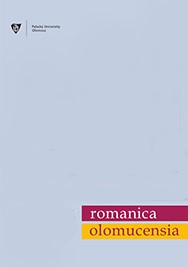Copi en Copi: el cuerpo del traductor
Copi within Copi: the translator's body
Author(s): Lucía CytrynSubject(s): Translation Studies
Published by: Univerzita Palackého v Olomouci
Keywords: Copi; queer studies; literary studies; author; translator;
Summary/Abstract: Copi's work twists the categories and units of the traditional literary story, from temporality, causality, and speed to its verisimilitude. The categories of author, writer, and name are particularly affected by this procedure: narrators and characters named Copi, Pico, Raúl Damonte, Darío Copi, cartoonists, and writers produce a multiplication of the proper name. Following a qualitative analysis methodology that takes elements from close reading, this article analyses the novels El Uruguayo and La ciudad de las ratas, by the Argentine author Copi, in the light of the theoretical relationship between translation, proper name, and body. As it turns out, through the figure of the translator, these two novels problematise the practice of naming, the relations of referentiality, and the limited authority of the authorial position. In both novels, translation appears not as the practice of passing from one language to another, as a search for the mediatisation of a text, but as a recognition of what is untranslatable in the relationship between things and their names. It will be concluded that, in these two novels, guaranteeing the transmission of an experience and a language through translation poses a fundamental problem: the impossibility of translating and the will to do so do not contradict each other but are transformed into a reflection on names. Names thus fulfil a condensatory function: they are the empty place left by writing and are the putting into action of a naming that is not naming but translating.
Journal: Romanica Olomucensia
- Issue Year: 34/2022
- Issue No: 2
- Page Range: 195-208
- Page Count: 14
- Language: Spanish

